The Three Great Unifiers of Japan: Oda Nobunaga, Toyotomi Hideyoshi, and Tokugawa Ieyasu were not the only well-known samurai warriors that you find in the history of Japan. There are other greatest Japanese samurais to learn about, such as Miyamoto Musashi, and Tomoe Gozen, a fearsome Japanese female samurai.
The samurai warriors are a key element of Japanese culture and history. Samurai does not just describe a kind of solider, but a social caste. In Japan, the samurai class arose in the 12th century and lasted until the 1870s.
The samurai were a hereditary caste that held a great deal of political and military power, as well as a unique culture adhering to the martial code of bushido. This included unflinching loyalty and indifference to pain.
The samurai caste was abolished by the Meiji Revolution, but their influence did not wane. Many samurai moved into business or professional roles, while their cultural influence upon Japan is still very great.
Many of the samurai are almost larger than life. Their fame has lasted centuries. Here are some of Japan’s famous samurai warriors!
1. Miyamoto Musashi (1584 – 1645)
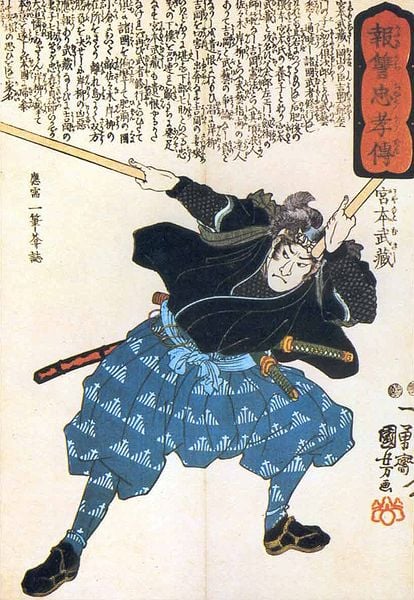
Born in 1584, Myamoto Mushashi was a famous and accomplished soldier, swordsman, and artist. He first engaged in real combat when he was 13. When he was on the losing side of the Battle Sekigahara in 1600, he became a ronin, or masterless samurai.
He set out to develop the perfect sword technique and developed a style of fencing with two swords (the nito ichi ryu). His reputation as a master swordsman has continued through the centuries as he is known as kensai, or sword saint.
His most famous duel is against his archrival Saski Kojiro on a small island off the coast. He quickly ended the fight by striking Kojiro on the head with a wooden sword. After this, he retired from dueling, though he did train a few students and helped to suppress the 1637 Shimabara Rebellion.
Myamoto Mushashi also wrote a famous work on strategy, Gorin no Sho (The Book of Five Rings), on his deathbed. He also wrote many other books, often pertaining to his martial art and his philosophies.
He was also a painter in the sumi-e style and his works are strikingly elegant. His paintings of birds are particularly renowned, especially Kobokumeikakuzu (“Shrike Perched on a Withered Branch”) and Rozanzu (“Wild Geese Among Reeds”).
2. Tokugawa Ieyasu (1543 – 1616)
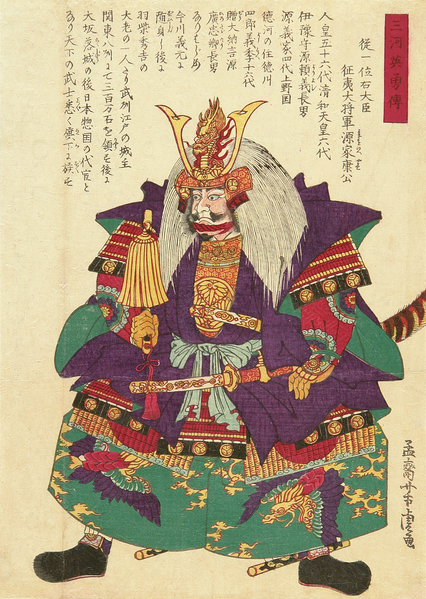
Born Matsudaira Takechiyo in 1542, this great samurai was the son of the lord of Mikawa province. He came of age in a Japan wracked with civil war and bloody feuds between territorial lords.
At four years old, Ieyasu was sent as a hostage to the Imagawa clan to secure an alliance. He was raised and educated in their court. In 1567, he took leadership of his clan and changed his name to Tokugawa, after his family’s home region, and took the first name Ieyasu.
For the next twenty-five years, he grew in military renown following a series of successful campaigns. His allies later gave him governance of lands in the east of Japan, including the small port of Edo. Ieyasu placed his headquarters here, taking the first step into transforming small Edo into the thriving metropolis of Tokyo.
After the unfortunate death of his ally Toyotomi Hideyoshi, civil war broke out again. Ieyasu won the war and gained the title of shogun, becoming the military governor of Japan and the ruler in all but name of the country. So began the Tokugawa shogunate.
Ieyasu sought to restore stability in a war-torn Japan. He also encouraged foreign trade and sought to improve foreign relations. Ieyasu’s influence on Japan cannot be overstated.
He passed away in 1616 and his mausoleum at Nikko is one of the most important shrines in the country.
3. Toyotomi Hideyoshi (1537 – 1598)
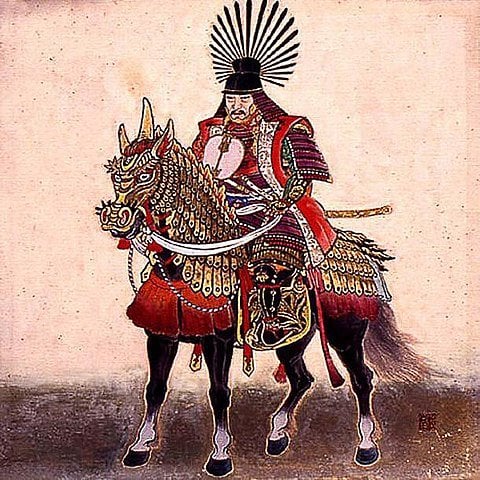
This feudal lord lived from 1536/37 to 1598 and served as chief Imperial minister. He helped finish to 16th-century unification of Japan, helping to create the country we know today.
Toyotomi Hideyoshi was born a peasant. He lest home when e was still a boy and became a page to one of the feudal baron’s retainers.
For a time, he became a foot soldier, then his cheer, intelligence, and tact helped him to be elevated to the status of samurai. He fought for the armies of Oda Nobunaga as the leader attempted to unify Japan under his rule.
He would later build a castle in Osaka. While trying to complete the late Nobunaga’s attempt at unifying the country, he clashed in battle with Tokugawa Ieyasu. The battle was inconclusive and the two samurai agreed to an alliance.
He later became a powerful minister and continued to pacify regions with Tokugawa Ieyasu’s assistance, becoming one of the key figures in the unified nation’s government.
Toyotomi Hideyoshi was responsible for solidifying the caste restrictions that marked Tokugawa Japan. Farmers, merchants, and monks were forbidden from using arms, while the class distinctions were made more rigid, separating warriors, artisans, farmers, and tradesmen into their own areas in towns and villages.
He also oversaw the destruction of many castles to reduce the number of strongholds in Japan. All of this was done to help restore order after the tumults of Japan’s civil wars. He abolished road checkpoints to make transportation easier and conducted land surveys. Mineral resources were developed to help create coinage for easier trade.
As he grew older, Toyotomi Hideyoshi set his sights on conquering Korea. He failed two times, despite striking a temporary truce with China. In many ways, Toyotomi Hideyoshi is the source of much of how we think of the time of the Tokugawa Shogunate.
4. Oda Nobunaga (1534 – 1582)
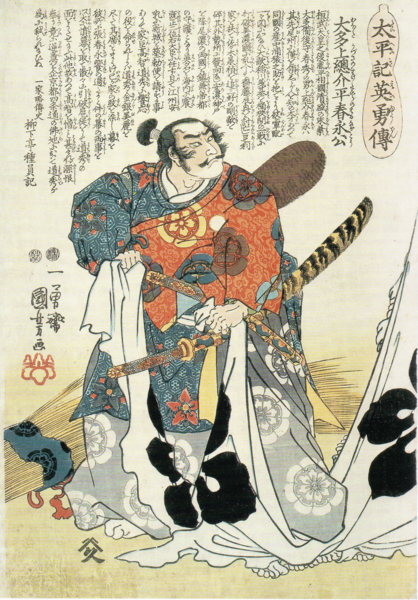
Oda Nobunaga’s story is the source of many others, but it is well worth knowing on its own. Born in 1534, Nobunaga lived in a deeply fractured Japan. Feuding warlords frequently clashed, causing much death and destruction.
At 16, he took over a single district of Owari Province after his father’s death. He was considered an eccentric (at best) or a fool (more often).
Nobunaga would associate with those of lower class and broke with strict protocols on many occasions, such as at his father’s funeral. Because of his sacrilegious behavior at the funeral, one of the family’s most loyal samurai, Hirate Masahide, committed suicide, shocking Nobunaga into responsibility.
This was just in time, as one of Nobunaga’s uncles took seized his lordship. With the help of another uncle, the usurper was killed.
Likewise, Nobunaga faced a challenge from his younger brother that only ended when he killed him. He then had to stake his own place among the many aggressive feudal lords.
After fending off attackers against all odds, Nobunaga began conquering other regions. Region after region fell under his control and he adopted the seal “TenkaFubu”, which means “All the world by force of arms”. Not all of this was military conquest, as Nobunaga was also a gifted statesman who won many diplomatic victories as well.
Nobunaga died before he unified all of Japan, perhaps from suicide or perhaps in an attempted coup, but it is his legacy that drove Tokugawa Ieyasu and his allies to create a unified, more stable Japan.
5. Kusunoki Masashige (1294 – 1336)
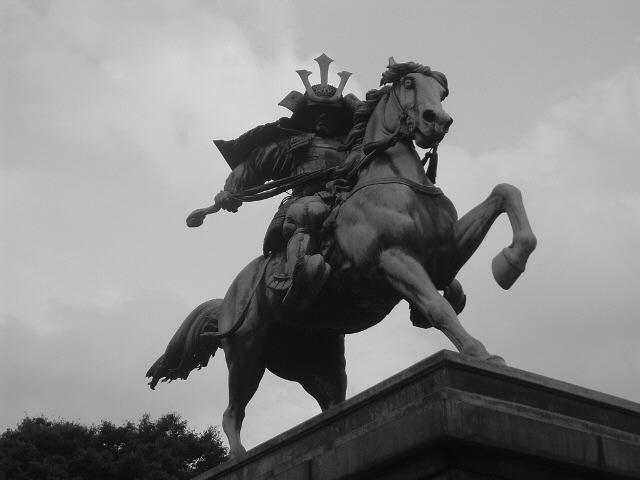
Hailing from Osaka, Kusunoki Masashige is still regarded as the model samurai. When he was born, in 1294, many samurai were very poor and very upset, as they believed that they had not been rewarded sufficiently by the government for their actions fighting the Mongolians.
Some samurai banded together to form the Akuto, a group that did not belong to the present government. KusunokiMasashige was a member of this group, though little else is known of his early life.
In 1331, Emperor Go-daigo (96th emperor of Japan) was forced to flee when his plot to take down the government was revealed. He found refuge at Mt. Kasagi in south Kyoto.
He declared war on the government. Masashige was one of the first to pledge their loyalty to the Emperor. The odds were against them, but Masashige was certain his cunning could win the day.
The government thought they could end the rebellion in only a few hours, but they were deeply wrong. Kusunoki Masashige used unconventional tactics. His soldiers did not wear fine armor or swords. Instead, they threw rocks and poured boiling water on those who tried to assault their castle in Kawachi.
When the greater tide seemed to turn upon news of the Emperor’s arrest, he opted to burn down his castle and flee, causing the government to think he and his troopshad committed suicide in the fire.
In Osaka, his homeland, he rallied his men as well as 1,000 locals. The government responded in force, laying siege to the small army and cutting off their supply lines. Masashige had anticipated this, however, and had created a secret path to supplies for his forces.
The besieging forces starved instead of his army. This victory rallied many who had issues with the government and prompted the emperor to escape his exile to lead a renewed effort to bring it down.
Despite this all, the samurai were still shortchanged and did not receive gifts of land that they needed to raise them out of poverty. Another rebellion and alternate government arose in Kysusu, led by Ashikaga Takauji, whom Masashige had helped escape to Kyushu.
Masashige encouraged the emperor to make peace, but he refused. He then tried to walk the Emperor into fleeing into exile, but that was refused as well. In the end. Masashige led an army to battle Ashikaga’s forces with slim hope for victory; his army was 899 men while Ashikaga’s was near 200,000.
With his forces whittled down to 70, he committed suicide and died in 1336. His devotion and cunning have made him a very popular samurai and he is renowned as a hero especially in his native Osaka.
6. Hattori Hanzo (1542 – 1597)
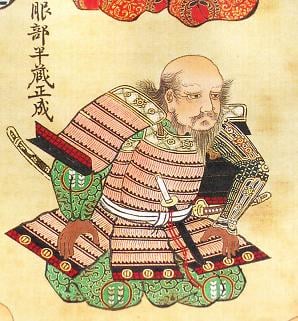
Born around 152, Hattori Hanzo (Hattori Masanari) was samurai in service to the Tokugawa clan. He was known to be a fearless warrior and performed many feats in service of the clan, including rescuing Tokugawa’s daughter from a castle and laying siege to another castle.
After the death of Oda Nobunaga, he helped lead Tokugawa Ieyasu to safety and some sources state that he helped rescue Ieyasu’s family. He served until he died suddenly at 55, supposedly collapsing while hunting- or died in a fight with a pirate, or spent his last days as a secluded monk.
Hanzo’s ferocity and skill in battle caused him to be known as “Demon Hanzo”. He is closely associated with ninjas due to his association with his native Iga Province, the center of ninjutsu.
Hanzo has been depicted in many media in various ways, and the character who shares his name in the film Kill Bill is no doubt inspired by this legendary Samurai.
7. Sanada Yukimura (1567 – 1615)
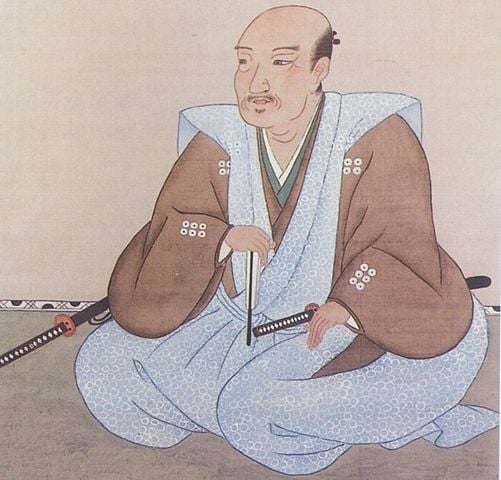
Yukimura was born in 1567 and was known as A Hero who may appear once in a hundred years” and “Crimson Demon of War”. His clan, the Sanada, was caught up in the wars of Oda Nobunaga and eventually found themselves split after Nobunaga’s death, fighting on different sides.
They primarily fought against the Tokugawa as they took power, with Yukimura as the leader of these forces. He held his own during the Winter Siege of Osaka Castle, causing his enemy to lose many men against his smaller force.
Even after a truce, Yukimura and his allies continued to fight against Tokugawa forces, enduring yet another siege on Osaka castle. It was during this siege that he led his forces to retreat.
Yukimura perished in the Battle of Tennoji-guchi, the last battle in the Siege of Osaka. His forces were vastly outnumbered and the fighting was intense.
Worn down by fruitless fighting, it is said that Yukimura told the enemy soldiers: “I am Sanada Nobushige, no doubt an adversary quite worthy of you, but I am exhausted and can fight no longer. Go on, take my head as your trophy.”
His clever and fierce defense of Osaka against the odds has earned him a valuable place in Japanese history and culture.
8. Takeda Shingen (1521 – 1573)
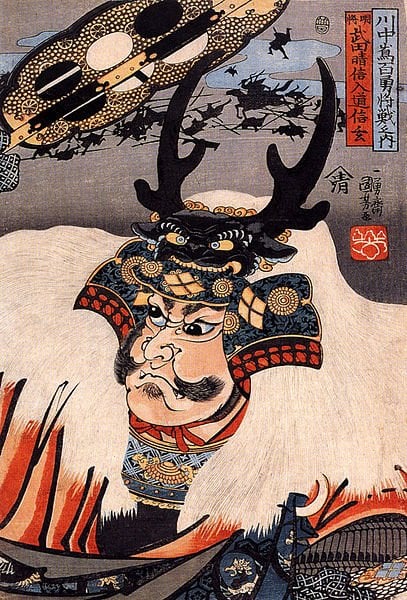
Born in 1521, Takeda Shingen was the feudal lord of Shinano Province, now Nagano prefecture. He was one of the warlords who struggled for power over the valuable Kanto Plain in eastern central Honshu.
Takeda is best known for a series of battles he fought against another famous warrior, Uesugi Kenshin. The battles have become legendary. These fierce battles were fairly indecisive, but they cemented Takeda’s influence and he became one of the most powerful military leaders in the region.
This made him a threat to Oda Nodabunaga’s efforts at conquest and his de facto successor, Tokugawa Ieyasu. Takeda defeated an army led by Ieyasu and began to make inroads into Tokugawa territory.
Takeda died a year after this. His genius and skill are celebrated throughout Japan, and one of the most famous works is the film Kagemusha (The Shadow Warrior) by Kurosawa Akira.
9. Honda Tadakatsu (1548- 1610)
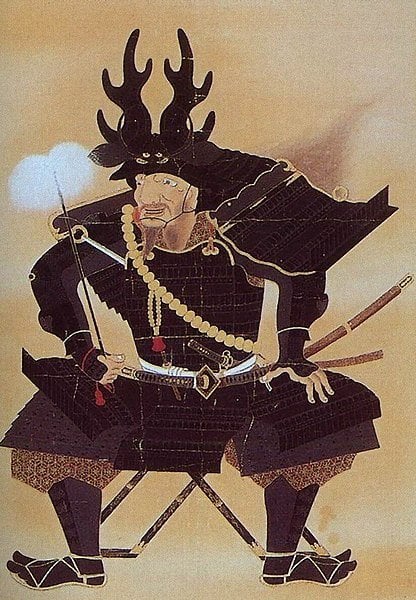
A loyal servant of Tokugawa Ieyasu, Honda Tadakatsu was a key figure in many of Ieyasu’s battles. It was thanks to his leadership skill that a fraction of the Tokugawa army was able to escape advancing Takeda troops before their decisive clash. Perhaps his greatest achievement came during the 1584 Komaki Campaign.
Left to fight as Ieyasu departed to fight another battle, he rode out to meet the vast enemy host with a small contingent of troops and challenged the army.
It is said his foe, Toyotomi Hideyoshi, was struck by the bravery of these men and their leader and ordered that no harm should come to them.
He continued to serve Ieyasu through many battles and campaigns and died in 1610, considered one of the shogun’s most loyal retainers and even his toughest general.
10. Uesugi Kenshin (1530 – 1578)
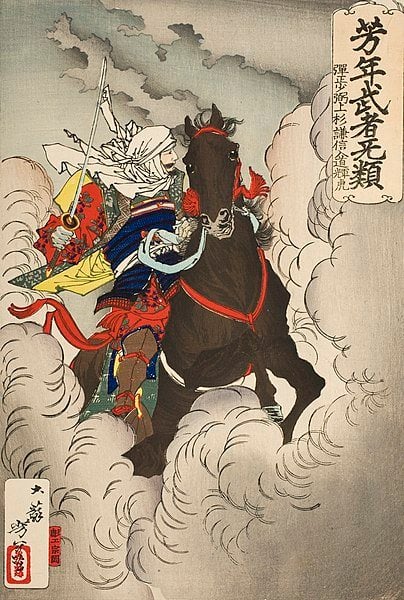
Famous opponent of Takeda Shingen, UesugiKenshin was born under the name Nagao Torachiyo, third son of the chief of the Echigo province.
When his father died, the family struggled to maintain control of the area until he secured it, gaining control of neighboring provinces in the process. He changed his last name when the family provided refuge to Uesugi Norimasa, the governor-general, who then adopted him as his son.
It was at this point, at the height of his power, that he began to engage Takeda for control of Kanto. Uesugi eventually sought to overthrow the powerful conqueror Oda Nodabunaga, but he died before he could begin his expedition to challenge the powerful lord.
11. Minamoto no Yoshitsune (1159 – 1189)
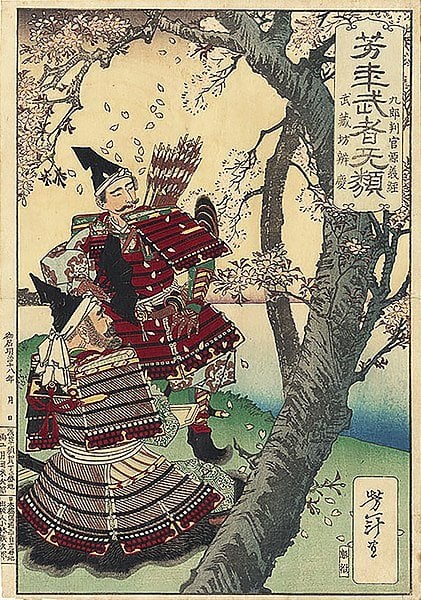
Born in 1159, Yoshitsune fought in the Genpei War, helping his half-brother consolidate power and becoming one of the most famous samurai in the history of Japan.
From an early age, he faced many challenges, facing death during the Heiji Rebellion in 1160 and placed in the care of monks at Kurama Temple at age ten.
He did not take to the life of the monks, however, and left with a gold merchant who knew his father, coming into the care of Fujiwara no Hidehira, a powerful clan lord.
Spectacularly skilled with a sword, eventually Yoshitsune took the side of Imperial forces against the usurping Taira clan. He played a key role in the war and helped reassert the power of the Emperor over the country.
Yoshitsune fell out of political favor when his brother Yoritomo schemed to end his growing power and forced him to flee to Kyoto. He found refuge with Fujiwara no Yasuhira, son of his childhood protector. However, with pressure from Yoritomo, he had Yoshitsune’s residence surrounded, defeated his retainers, and forced him to commit suicide.
Many legends have grown surrounding his death, ranging from escape to live in peace to escape to resurface as Genghis Khan. He is a tragic hero in Japanese culture and folklore and has been depicted in many media.
12. Date Masamune (1567 – 1636)
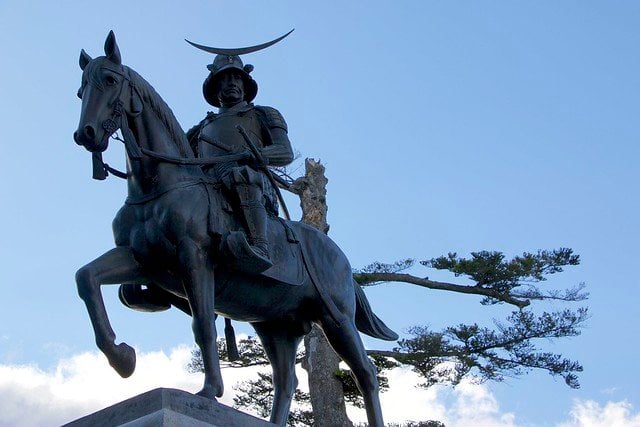
Founder of the city of Sendai, Date Masamune lived from 1567 to 1636. He was an incredible tactician. As a child, smallpox caused him to lose sight in his right eye, which was later removed.
Because of this, he would eventually be known as the “One-Eyed Dragon of Ōshu”. He took leadership of the Date clan and built their power.
When a retained defected to the rival Ashina clan, he hunted him down, casting aside alliances and conquering lands as he hunted down the man he viewed as a traitor. After this campaign, he fought many battles with his neighbors.
He refused to take sides for as long as possible during the Tokugawa-Toyotomi civil war until his overlord, Toyotomi Hideyoshi, forced his hand, forcing him to surrender much of his land. After Hideyoshi’s death, he supported Tokugawa Ieyasu, becoming one of the most powerful lords.
After finding that the land he had been gifted was not as productive as hoped, he took himself, his family, and 52,000 vassals to the small fishing village of Sendai, causing it to grow into a prosperous city.
Because of his power and sympathy for foreign causes, Ieyasu always viewed him with suspicion, though he rewarded him with more land later in his life.
Masamune was known for his great sympathy for the Christian population growing in Japan, only reluctantly allowing their persecution in his domain when Ieyasu outlawed Christianity.
It is because of his patronage of an expedition ship that there is now a small community of Japnese descendants living in Spain, as their ancestors remained there to escape the persecution of Christians in Japan.
Masamune was an incredibly influential samurai who changed the political and cultural landscape of Japan forever. He has been represented in many media that chronicle both real and imagined versions of his life.
13. Shimazu Yoshihisa (1533 – 1611)
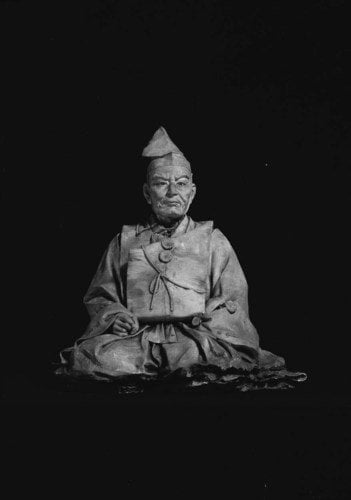
Considered one of the greatest leaders of his time, Shimazu Yoshihisa was lord of the Satsuma Province. He was born in March 4, 1533 and died in March 5, 1611.
He led his brothers in unifying Kyushu, which the clan claimed until Toyotomi Hideyoshi claimed it.
The Shimazu were defeated and Yoshihisa spent his final years as a Buddhist priest, composing poetry. His humility and skill as a tactician make him beloved in Japan.
14. Tomoe Gozen (1157 – 1247)
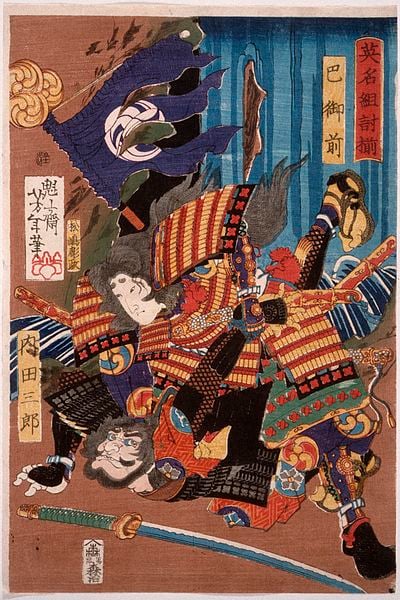
One of the few female samurai know, Tomoe Gozen was regarded as a great beauty. Her skill at arms and on horseback as just as celebrated as her beauty.
She was the daughter of Nakahara Kanetō, a supporter of Minamoto no Yoshinaka, and she inherited his loyalty. She served him in the Genpai Wars, commanding 300 samurai against 2,000 warriors of the Taira clan and winning.
Tomoe’s life is the stuff of legend. She beheaded Honda no Morishige of Musashi and killed the samurai Uchida Ieyoshi. After her feats, she was considered the first general of Japan.
Her story and skill have been the focus of books, video games, manga, and more over the years, enshrining her in Japanese pop culture.
If you like watching Japanese movies, you should watch some of these greatest samurai movies all time.


